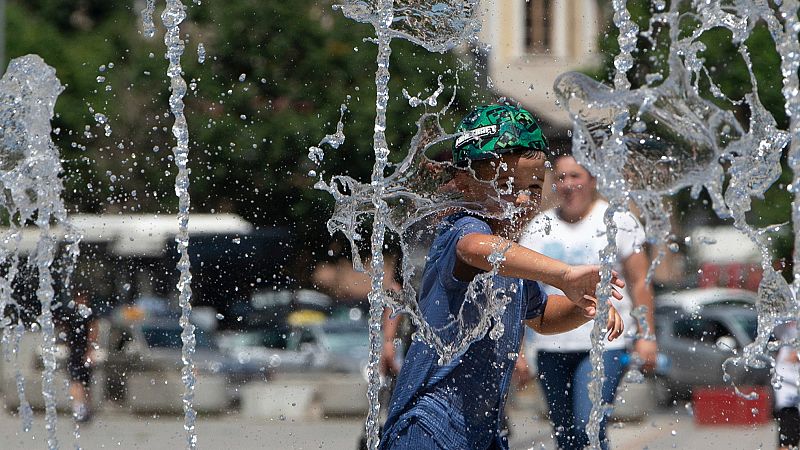The Western Balkans Grapple with Severe Drought and Heatwave
The Western Balkan region is currently experiencing one of the most severe droughts in recent years, driven by a persistent heatwave that has swept across Europe. This extreme weather is linked to an African anticyclone, which has significantly disrupted daily life, agriculture, and energy production.
In central Albania, temperatures have soared to 40 degrees Celsius on several days, with meteorologists predicting a continued lack of rainfall until September. This prolonged dry spell has left rivers nearly dry, as winter and spring seasons saw minimal precipitation. The situation has forced Albanian authorities to take urgent measures to support the agricultural sector.
One such initiative involves the completion of a project to divert water from the Mat River in the north to irrigate approximately 40 square kilometers of farmland. This effort aims to sustain crop production in the face of dwindling water resources. However, the impact of the drought extends beyond agriculture, affecting the country’s power generation.
Albania relies heavily on hydropower, primarily from stations in the northern regions. With reduced water flow, the national power corporation has had to spend up to €60 million importing energy during the first half of this year. This increased reliance on external sources highlights the vulnerability of the country’s energy infrastructure in times of climatic stress.
Impact on Serbia and Kosovo
Serbia is also feeling the effects of the extreme drought. The state meteorological institute has issued warnings about the severity of the situation, noting that crops are suffering due to the lack of water. Rivers and lakes have seen significant drops in water levels, leading to strict restrictions on drinking water in many small towns and villages.
In Kosovo, the water shortage has led to the closure of the Gërmia swimming pool in Pristina, a popular destination for residents seeking relief from the summer heat. Once a major recreational spot, the pool was known for its natural beauty, situated within a regional park surrounded by hills and mountains that once provided ample water resources.
This year, however, the pool has faced a critical shortage. The staff could not supply the 20,000 cubic meters of water required to maintain the facility. Previously, it took six days to fill the pool, but this year, the process is expected to take over three weeks due to the ongoing drought. According to manager Bardh Krasniqi, the situation has forced the pool to remain closed despite the intense heat.
“Due to the strong heatwave affecting the country and the region, unfortunately we have not been able to open the largest pool in the country,” Krasniqi explained. As temperatures are expected to reach 35 degrees Celsius on Thursday, the Health Institute has advised people to avoid direct sunlight and urged children, the elderly, and those who are unwell to stay indoors.
Broader Impacts Across Europe
The heatwave has not been confined to the Western Balkans. Across Europe, scorching temperatures have reached as high as 46.6 degrees Celsius in Portugal’s Mora. These extreme conditions have also led to an increase in wildfires, particularly in the hotter and drier summers that have become more common in recent years.
The combination of rising temperatures, prolonged droughts, and the resulting strain on water and energy resources poses a serious challenge for the region. Governments and local authorities are working to implement emergency measures, but the long-term effects of these climate extremes remain uncertain.
As the situation continues to evolve, the need for sustainable water management and climate resilience strategies becomes increasingly urgent. The Western Balkans, like many other parts of the world, are facing a growing reality where extreme weather events are no longer anomalies but part of a new normal.







